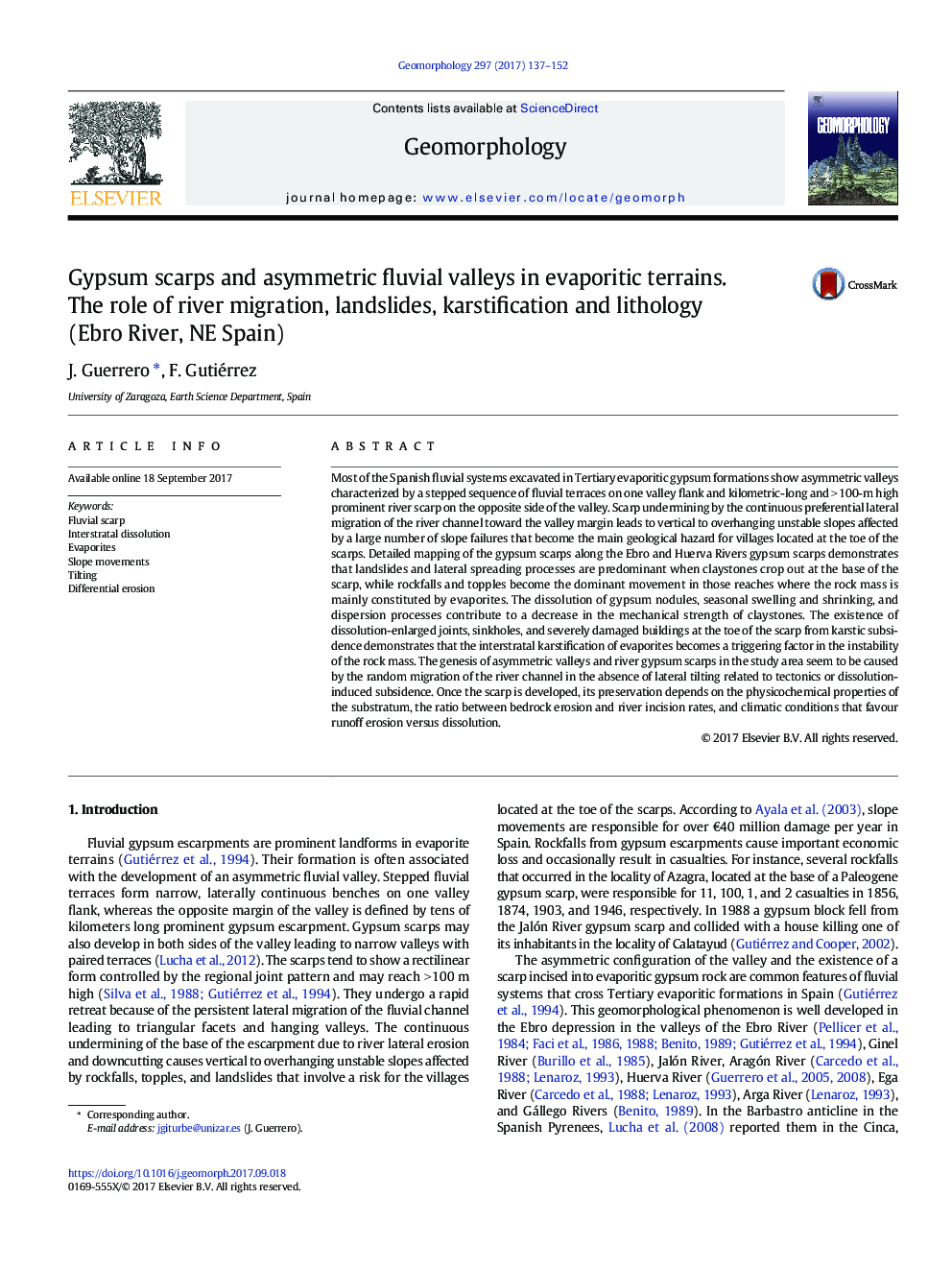| کد مقاله | کد نشریه | سال انتشار | مقاله انگلیسی | نسخه تمام متن |
|---|---|---|---|---|
| 5780870 | 1635353 | 2017 | 16 صفحه PDF | دانلود رایگان |
عنوان انگلیسی مقاله ISI
Gypsum scarps and asymmetric fluvial valleys in evaporitic terrains. The role of river migration, landslides, karstification and lithology (Ebro River, NE Spain)
دانلود مقاله + سفارش ترجمه
دانلود مقاله ISI انگلیسی
رایگان برای ایرانیان
موضوعات مرتبط
مهندسی و علوم پایه
علوم زمین و سیارات
فرآیندهای سطح زمین
پیش نمایش صفحه اول مقاله

چکیده انگلیسی
Most of the Spanish fluvial systems excavated in Tertiary evaporitic gypsum formations show asymmetric valleys characterized by a stepped sequence of fluvial terraces on one valley flank and kilometric-long and >Â 100-m high prominent river scarp on the opposite side of the valley. Scarp undermining by the continuous preferential lateral migration of the river channel toward the valley margin leads to vertical to overhanging unstable slopes affected by a large number of slope failures that become the main geological hazard for villages located at the toe of the scarps. Detailed mapping of the gypsum scarps along the Ebro and Huerva Rivers gypsum scarps demonstrates that landslides and lateral spreading processes are predominant when claystones crop out at the base of the scarp, while rockfalls and topples become the dominant movement in those reaches where the rock mass is mainly constituted by evaporites. The dissolution of gypsum nodules, seasonal swelling and shrinking, and dispersion processes contribute to a decrease in the mechanical strength of claystones. The existence of dissolution-enlarged joints, sinkholes, and severely damaged buildings at the toe of the scarp from karstic subsidence demonstrates that the interstratal karstification of evaporites becomes a triggering factor in the instability of the rock mass. The genesis of asymmetric valleys and river gypsum scarps in the study area seem to be caused by the random migration of the river channel in the absence of lateral tilting related to tectonics or dissolution-induced subsidence. Once the scarp is developed, its preservation depends on the physicochemical properties of the substratum, the ratio between bedrock erosion and river incision rates, and climatic conditions that favour runoff erosion versus dissolution.
ناشر
Database: Elsevier - ScienceDirect (ساینس دایرکت)
Journal: Geomorphology - Volume 297, 15 November 2017, Pages 137-152
Journal: Geomorphology - Volume 297, 15 November 2017, Pages 137-152
نویسندگان
J. Guerrero, F. Gutiérrez,